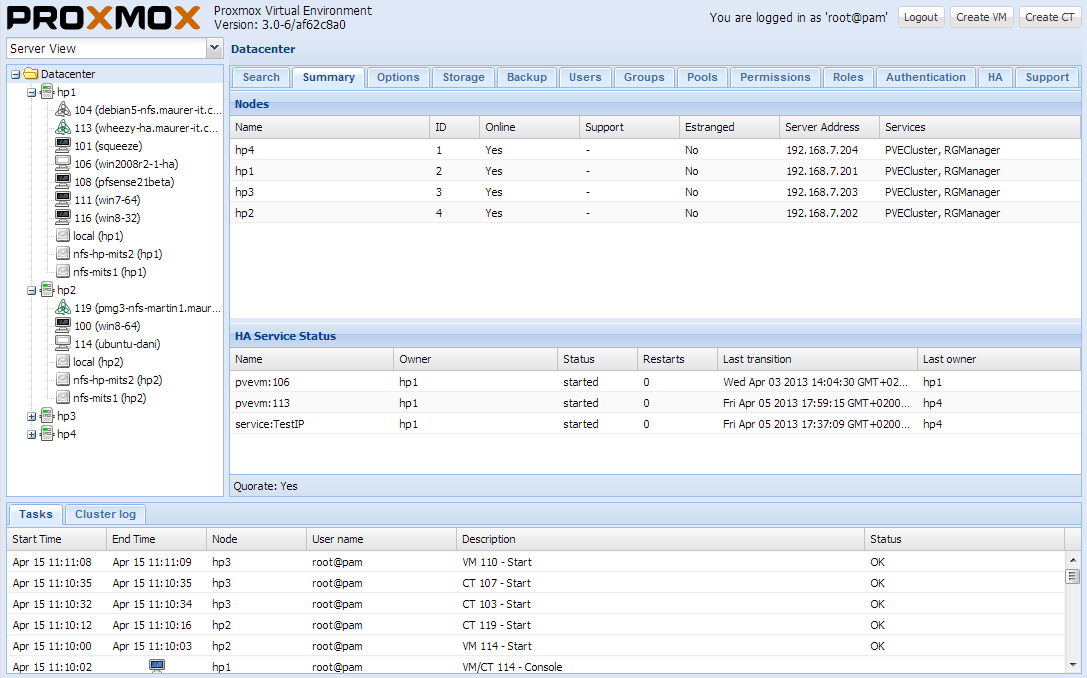Happy 5th birthday, Proxmox

Proxmox is an open-source virtualization solution that boasts more than 40,000 installed hosts worldwide and a community membership of over 20,000. As a virtual host system, Proxmox allows you to easily set up and manage KVM and containerized virtual machines on the same host. This versatility and combined management capability has propelled this project from obscurity to mainstream.
Part of what helped bring Proxmox to mainstream use is its graphical interface management for container virtualization — traditionally handled only by the command line. The additional KVM setup and management capability has pulled in a greater audience as well.
Combining both KVM virtualization and container virtualization gives you the best of both virtual worlds. KVM is what you know as traditional virtualization, where you have a graphical console or the optional text console for nix systems. Container virtualization is a type of virtualization that goes by many names, including zones, containers, and jails. It is the most efficient type of virtualization in that you can set up hundreds of virtual machines per host.
Containers use a "jailed" or partitioned directory system for each virtual machine, and it leverages the system's kernel and other shared libraries. This type of virtualization can only host virtual machines that use the running kernel.
KVM virtual machines, on the other hand, can be of just about any operating system: Windows, Linux, Solaris, etc.
And note that the graphical interface, shown in the original screenshot above, looks very much like that of Citrix XenCenter and VMware's vCenter. You'll have no trouble integrating Proxmox into your environment, or using it exclusively as your sole virtualization platform.
"When we first released Proxmox VE in 2008, there was no open-source GUI solution for container-virtualization with OpenVZ suitable to our needs," explained Martin Maurer, CEO of Proxmox. "That's why we developed Proxmox VE. Most virtualization projects focused on XEN, but after we tested KVM, we realised that this technology was more suitable to our needs. Now, five years later, KVM is the best established hypervisor in almost all Linux distributions. Proxmox VE is still one of the easiest to use, but also very flexible open-source virtualization products, combining KVM and containers on one platform."
Milestones for Proxmox Virtual Environment
First public release on April 15, 2008: Proxmox VE V0.9
GUI for managing container and KVM, available in more than 16 languages
April 2012: Proxmox VE V2.0
RESTful web API
High availability (HA) based on Redhat Cluster and Corosync
2013: Over 40,000 hosts in more than 140 countries
Active community: More than 20,000 forum members
Roadmap Q2/2013: Proxmox VE 3.0.
One special feature not necessarily found in open-source, community-driven projects is commercial support. Proxmox Server Solutions offers several levels of support subscription plans for business use, ranging between €120 and €800 per year.
If you haven't tried Proxmox, I suggest that you do. It installs quickly on bare metal and is easy to use. You'll be shocked at how quickly you can create an entire virtual infrastructure.
If you don't know much about Proxmox or container virtualization, the links below will help you with more information. You can always ask me, too. I'll be glad to help.
Additional information
Website: www.proxmox.com
Wiki Proxmox VE: http://pve.proxmox.com/wiki/Main_Page
Roadmap: http://pve.proxmox.com/wiki/Roadmap
Downloads: http://www.proxmox.com/downloads/proxmox-ve
